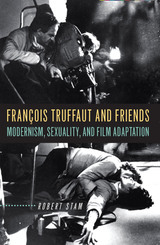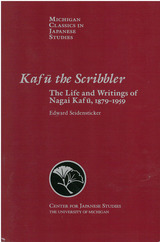2 books about 1879-1959

François Truffaut and Friends
Modernism, Sexuality, and Film Adaptation
Stam, Robert
Rutgers University Press, 2006
One of François Truffaut's most poignantly memorable films, Jules and Jim, adapted a novel by the French writer and art collector Henri-Pierre Roch. The characters and events of the 1960s film were based on a real-life romantic triangle, begun in the summer of 1920, which involved Roch himself, the German-Jewish writer Franz Hessel, and his wife, the journalist Helen Grund.
Drawing on this film and others by Truffaut, Robert Stam provides the first in-depth examination of the multifaceted relationship between Truffaut and Roch. In the process, he provides a unique lens through which to understand how adaptation works-from history to novel, and ultimately to film-and how each form of expression is inflected by the period in which it is created. Truffaut's adaptation of Roch's work, Stam suggests, demonstrates how reworkings can be much more than simply copies of their originals; rather, they can become an immensely creative enterprise-a form of writing in itself.
The book also moves beyond Truffaut's film and the mnage--trois involving Roch, Hessel, and Grund to explore the intertwined lives and work of other famous artists and intellectuals, including Marcel Duchamp, Walter Benjamin, and Charlotte Wolff. Tracing the tangled webs that linked these individuals' lives, Stam opens the door to an erotic/writerly territory where the complex interplay of various artistic sensibilities-all mulling over the same nucleus of feelings and events-vividly comes alive.
Drawing on this film and others by Truffaut, Robert Stam provides the first in-depth examination of the multifaceted relationship between Truffaut and Roch. In the process, he provides a unique lens through which to understand how adaptation works-from history to novel, and ultimately to film-and how each form of expression is inflected by the period in which it is created. Truffaut's adaptation of Roch's work, Stam suggests, demonstrates how reworkings can be much more than simply copies of their originals; rather, they can become an immensely creative enterprise-a form of writing in itself.
The book also moves beyond Truffaut's film and the mnage--trois involving Roch, Hessel, and Grund to explore the intertwined lives and work of other famous artists and intellectuals, including Marcel Duchamp, Walter Benjamin, and Charlotte Wolff. Tracing the tangled webs that linked these individuals' lives, Stam opens the door to an erotic/writerly territory where the complex interplay of various artistic sensibilities-all mulling over the same nucleus of feelings and events-vividly comes alive.
[more]

Kafu the Scribbler
The Life and Writings of Nagai Kafu, 1897–1959
Edward Seidensticker
University of Michigan Press, 1990
Kafū the Scribbler is neither pure biography nor pure criticism nor yet a pure anthology, but a blending of the three. It is an introduction to Nagai Kafū and his city, accompanied by a fairly generous sampling from his works. Marleigh Ryan writes:
“In this book Edward Seidensticker presents a unique combination of biography and literary criticism by skillfully interweaving details of the life of Nagai Kafū with studies of his writing. With quotations of from Kafū’s fiction and nonfiction alike, Seidensticker is able to reconstruct many incidents in the author’s life which had previously been little understood. The latter half of the book is given over to translations of short stories and to selections from two novels and a journal. Seidensticker has thoughtfully given cross references to the material in both parts of the book which enable the reader to handle this wealth of material with some dexterity.
“Seidensticker’s skill as a translator is so well established that it seems almost unnecessary to comment on it further here but one cannot help being impressed by his rendering of Kafū’s lyrical style. As we realize when reading the critical material, there is remarkably little plot or character development in Kafū’s fiction. His position as leading modern writer is dependent to a considerable degree upon the beauty and grace of his style, and we are fortunate indeed to have such masterful translations as these to convey that style.”*
*Ryan, Marleigh. Journal of the American Oriental Society 88, no. 3 (1968): 624. doi:10.2307/596924.
[more]
READERS
Browse our collection.
PUBLISHERS
See BiblioVault's publisher services.
STUDENT SERVICES
Files for college accessibility offices.
UChicago Accessibility Resources
home | accessibility | search | about | contact us
BiblioVault ® 2001 - 2024
The University of Chicago Press









